Top 5 Interesting Facts about Komodo Dragons
The Komodo dragon, which can grow up to 10 feet long and weigh 150 pounds or more, is the biggest reptile currently existing on Earth. This living fossil ... read more...doesn't fly or breathe fire, even though it may resemble a miniature version of the mythological dragons you see in movies. Here are interesting facts about Komodo Dragons to be worthy of our awe and admiration.
-
Komodo dragons are apex predators because of their size, and they rule the habitats in which they reside. Invertebrates, birds, and mammals are among the prey that komodo dragons seek and ambush. Typically, they follow and creep up on a target before lunging at it with incredible speed. With their powerful jaws and sharp teeth, they seize their prey. Large amounts of germs found in komodos' saliva aid in the victim's death by entering the bloodstream through bite wounds. Any prey that manages to escape the Komodo dragon's grasp typically perishes later from germs in their blood.
There are two glands in the lower jaw that emit many poisonous proteins, and it has been suggested that they have a venomous bite. Although the biological importance of these proteins is debatable, it has been established that the glands release an anticoagulant. The collective hunting behavior of komodo dragons is unique among reptiles. Komodo dragons eat a lot of carrion in addition to Javan rusa (Rusa timorensis), which makes up the majority of their diet. Komodo dragons occasionally attack people as well.
They are so ferocious hunters that they may consume enormous prey, including horses, deer, goats, pigs, and even people. They will also consume small animals, monkeys, birds, bird eggs, other reptiles, even smaller Komodo dragons.
They occasionally dig up human remains from shallow graves and devour them. The Komodo people moved their tombs from sandy to clay land and piled boulders on top of them to stop the lizards from looting their graves due to this habit.
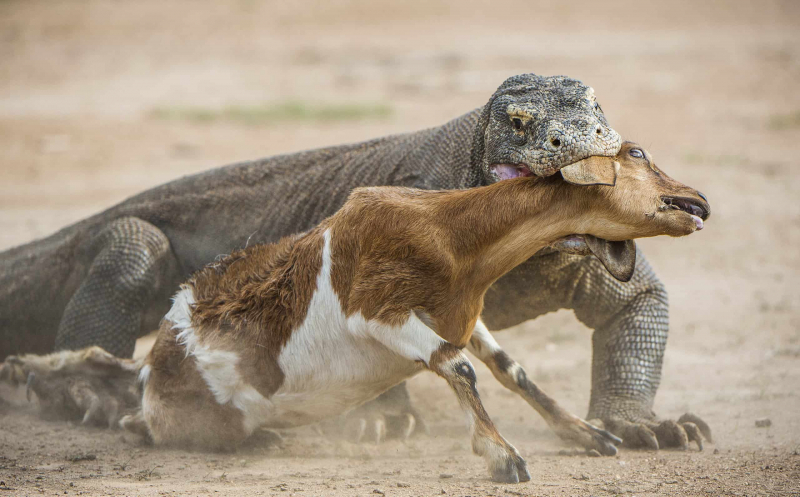
Photo: Getty Images - Komodo dragons hunting an antelope Video: Reptile's Story - Komodo hunting monkey sucess -
One of the interesting facts about Komodo dragons is Komodo dragons were first documented by Europeans in 1910, when Lieutenant van Steyn van Hensbroek of the Dutch colonial authority heard reports of a "land crocodile." After receiving a photograph and a skin from the lieutenant as well as two more specimens from a collector, Peter Ouwens, the director of the Zoological Museum of Bogor, Java, wrote a study on the subject in 1912, which led to widespread recognition.
When the London Zoo originally opened its doors in 1927, the Reptile House featured the first two live Komodo dragons to arrive in Europe. Some of the first observations of these species in captivity were made by Joan Beauchamp Procter, who also showed their behavior at a scientific meeting of the Zoological Society of London in 1928.W. Douglas Burden's 1926 voyage to Komodo Island was motivated by the Komodo dragon. This expedition served as the basis for the 1933 film King Kong when it returned with 12 preserved specimens and two living ones. Burden is also credited with creating the slang term "Komodo dragon." The American Museum of Natural History still has three of his specimens on exhibit after being stuffed.
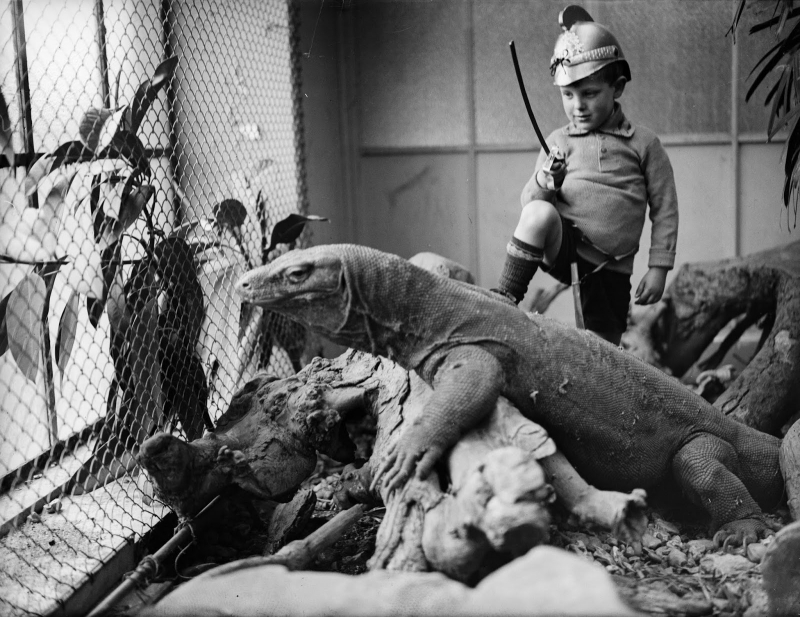
Photo: Zoology Jottings- The first two live Komodo dragons to arrive in Europe were exhibited in the Reptile House at London Zoo when it opened in 1927 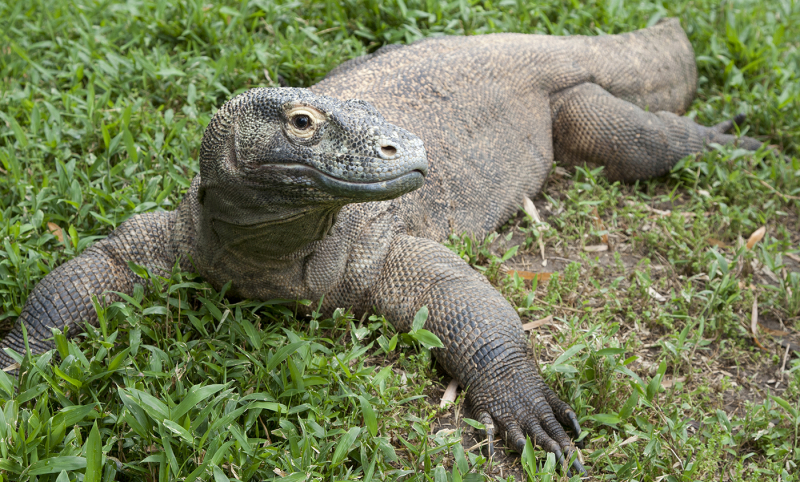
Photo: Smithsonian's National Zoo - Komodo dragon -
The Komodo dragons enjoy hot and dry climates, and often dwells in low-elevation tropical forests, savannas, and dry, open grasslands. Even while it has some nighttime activity, being an ectotherm, it is primarily active during the day.
Komodo dragons live alone and only assemble to reproduce and feed. They can dive up to 4.5 m (15 ft) and run at speeds up to 20 km/h (12 mph) in short bursts. When they are young, they can also climb trees with ease thanks to their powerful claws. The Komodo dragon can stand on its hind legs and use its tail as support to grab out-of-reach prey. As it becomes bigger, it mostly uses its claws as weapons because it can't climb due to its enormous size.
The Komodo dragon uses its strong forelimbs and claws to dig tunnels up to 3 meters (3.3 to 9.8 feet) broad for protection. Due to its size and propensity for resting in these burrows, it may maintain body heat throughout the night and cut down on its morning basking period. The Komodo dragon spends the warmest portion of the day in the shade while hunting in the late afternoon. These unique resting locations are designated by droppings and are bare of flora. They are typically found on slopes with cold sea breezes. They are ideal hiding places from which to ambush deer.
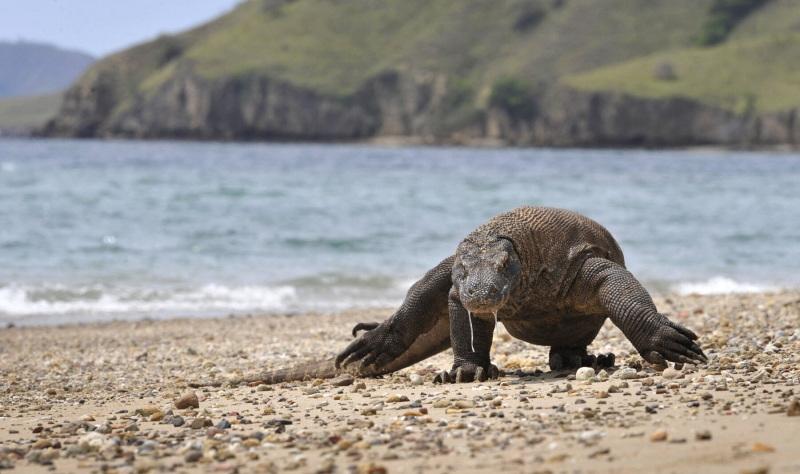
Photo: The New York Times - Komodo Dragon 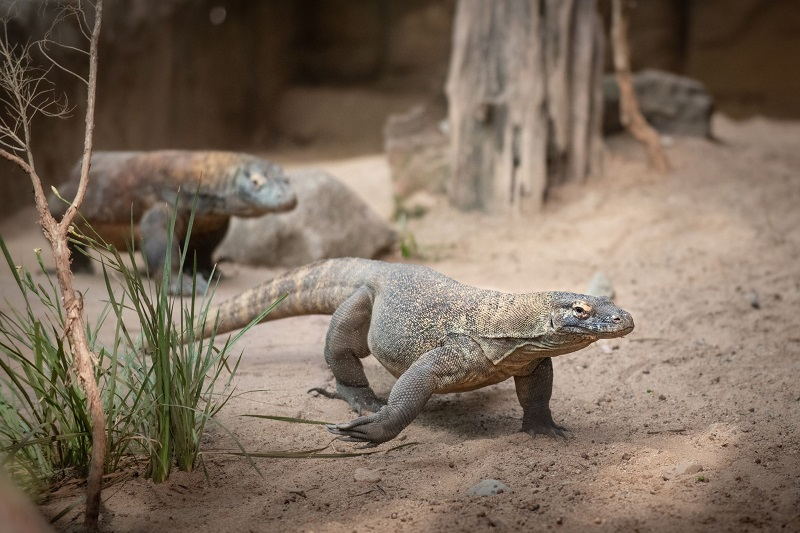
Photo: Hot 91.1 - Komodo Dragons -
It's a little difficult to picture Komodo dragons as small creatures because most visitors to the zoo only ever see them as adults. However, they begin as little replicas of the original thing, just like most infants do. The young prefer to stay up in the trees until they are completely grown, whilst the adults frequently spend their time in burrows out of the heat.
When young, they can climb trees with ease using their powerful claws, dive up to 4.5 m, and run quickly in short bursts up to 20 km/h. The Komodo dragon can stand on its hind legs and use its tail as support to grab out-of-reach prey. As it becomes bigger, it mostly uses its claws as weapons because it can't climb due to its enormous size.
They are adept climbers and spend a lot of time in the trees during their first few years of life thanks to their razor-sharp claws. Because Komodo dragons are cannibalistic and will eat their infants if nothing else is available—or just if they feel like it—the young don't accompany their parents in the burrows. As they become larger and heavier, adults have a tougher time climbing the taller trees. Therefore, if you find yourself on an island with these creatures, you might be able to climb a tree to escape a large one only to come across a large group of other dragons of varying sizes that are eager to devour your flesh.Video: MY CAM VIDEOS - komodo dragon trees are climbing 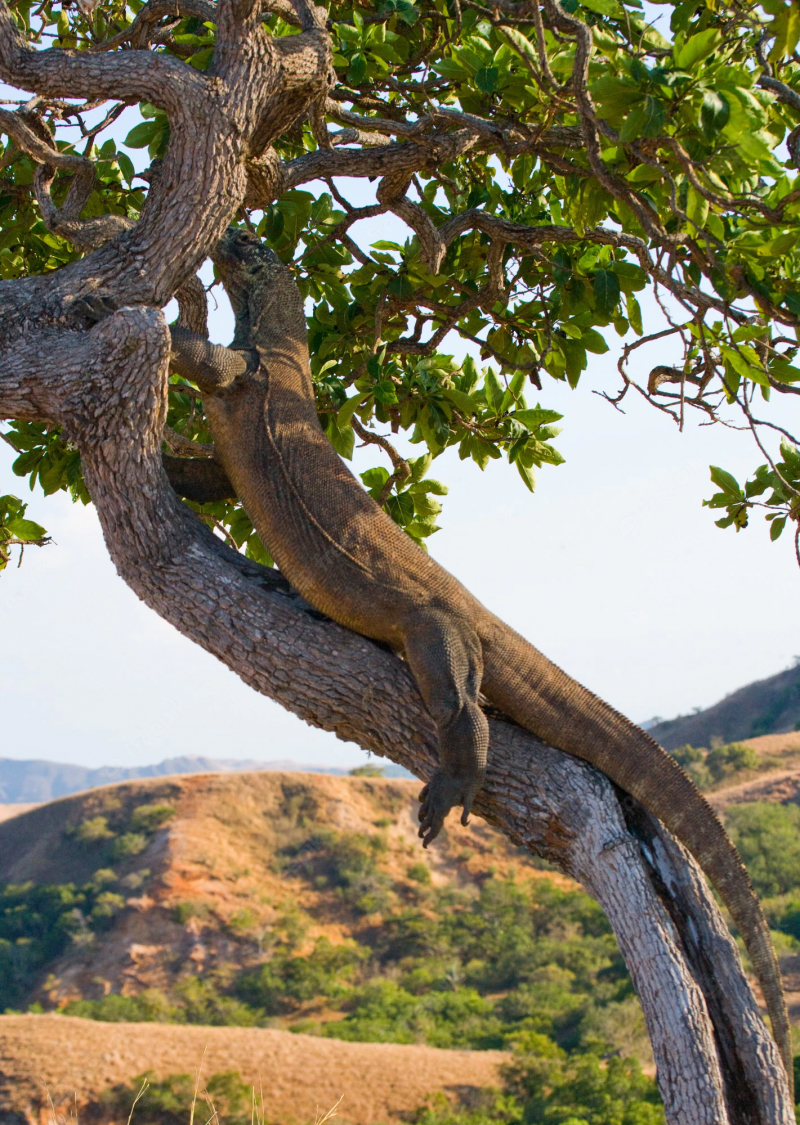
Photo: Freepik - Komodo dragon is climbing up a tree -
One of the interesting facts about Komodo dragons, they are a skilled swimmer! By swimming, these reptiles will move from one island to another. Komodo dragons can swim for up to a mile without stopping. Although it may not be immediately apparent, their bodies appear to be created for the water. Their long tails swish through the water, and their muscular limbs paddle like oars, allowing them to move somewhat like fish with the extra bonus of limbs that can let them go even faster.
Because Komodo dragons are cold-blooded lizards, spending too much time in the water might make them chilly, which could slow down their metabolism and movement. However, even after spending extended amounts of time in the water, the South Pacific's warm waters prevent them from feeling instantly chilly, and their thick skin acts as an additional layer of defense against the cold.
We don't yet know the actual speed at which Komodo dragons can swim. In order to determine the Komodo dragons' average swimming speed, scientists haven't been able to time enough of the animals in the water. They can swim for quite long distances due to how smoothly they move through the water. They can move quickly when necessary, but because they don't move as gracefully on land, they frequently move much more quickly in the water.
Video: Craig Capehart - Swimming Komodo Dragons! Video: KDTechs - Komodo Dragon Swimming And Hunting Fish


























